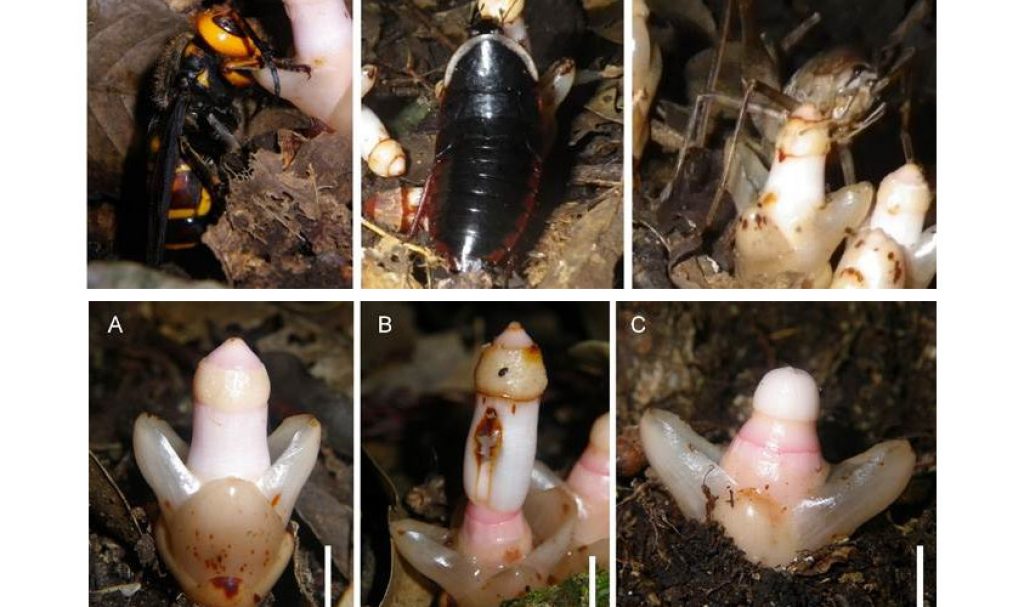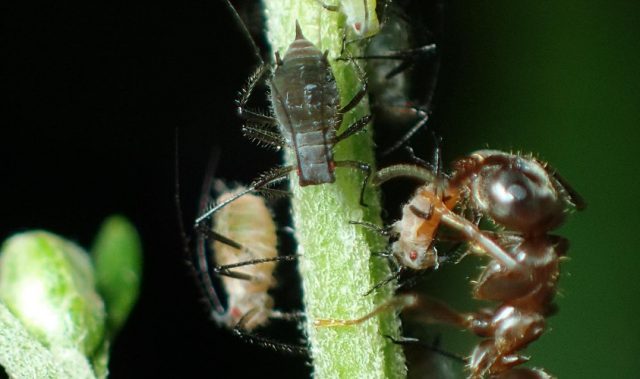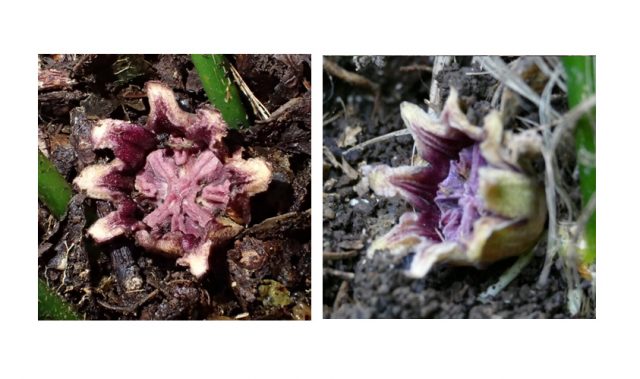
AsianScientist (Jan. 29, 2019) – Wasps, cockroaches and crickets may be viewed as pests, but for a certain species of plant on the Japanese island of Yakushima, they are vital for pollination, say scientists at Kobe University, Japan. They published their findings in Plant Biology.
Approximately 90 percent of flowering plants depend on bees and other animals for cross-pollination, rewarding these creatures with pollen and nectar. While honeybees are undeniably important, some plants entrust their pollination to different animals.
Several species of banana use bats as pollinators, while the banksia plant relies on opossums. The relationship with pollinators has played a big role in plant diversification, so plants with odd-looking flowers may well be pollinated by an unusual type of animal.
While studying the non-photosynthetic Mitrastemon yamamotoi plant, Associate Professor Kenji Suetsugu of Kobe University revealed that wasps, cockroaches and crickets were key pollinators of this plant species. From 2008 to 2011, Suetsugu’s group carried out observations, day and night, of the animals that visited M. yamamotoi in one of its native habitats on Yakushima.
The researchers found that floral visits from birds were surprisingly rare. Meanwhile, the most important pollinators were revealed to be wasps, cockroaches and camel crickets. These insects bustled quickly from flower to flower in the M. yamamotoi to suck its nectar, then flew away with large amounts of pollen on their bodies. The researchers further confirmed that the flowers visited by these insects bore fruit in the following days.
Wasps, cockroaches and crickets are not generally seen as major pollinators. Cockroaches have only been recorded as pollinating a few species of plants across the world, and there was no record at all of plants pollinated by camel crickets until now. One explanation for this unusual choice of pollinators is M. yamamotoi’s habitat. Plants that do not photosynthesize can live in environments where the sunlight barely reaches, giving them an edge over potential competitors.
In these dark environments, pollinating insects such as bees and butterflies are rare. This is probably why the plant relies on wasps, which look for food in comparatively gloomy environments, as well as the cockroaches and crickets that roam the forest floor, said the researchers.
It is not clear exactly how M. yamamotoi attracts these insects, but wasps, cockroaches and crickets all enjoy fermented food such as tree sap, and the nectar of the M. yamamotoi flowers has a fermented odor.
“I believe that this fermentation smell may be the key to attracting the insects,” said Suetsugu, “I plan to discover the mechanism that M. yamamotoi uses to release this scent”.
The article can be found at: Suetsugu (2018) Social Wasps, Crickets and Cockroaches Contribute to Pollination of the Holoparasitic Plant Mitrastemon yamamotoi (Mitrastemonaceae) in Southern Japan.
———
Source: Kobe University.
Disclaimer: This article does not necessarily reflect the views of AsianScientist or its staff.












